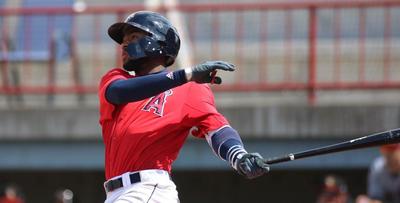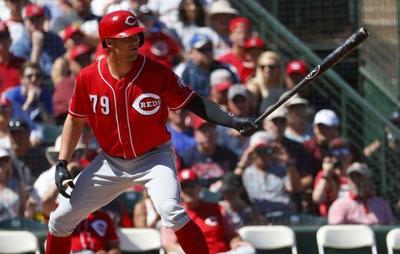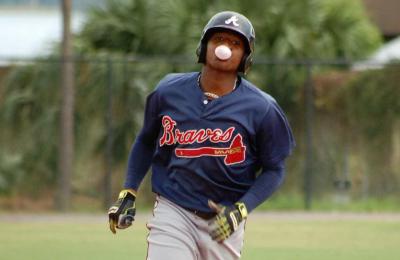Expected ERA vs Actual ERA
Expected ERA (XERA) depicts a pitcher's "True ERA" as it bases its expectation on factors within a pitcher's control. These factors include Hits, Walks, Home Runs allowed and K's. When you consider the inequity with the ERA calculation, specifically related to errors and base runners inherited/left, many including myself consider XERA to be a more precise gauge of ability.
Expected ERA is a term coined by two Sabermetric researchers (Gill and Reeve) who developed the following mathematical formula ((.575 * H/9 ) + (.94 * HR/9 ) + (.28 * BB/9 ) - (.01 * K/9 ) - Normalizing Factor). The normalizing factor is based on the league (typically in the .270 and .285 range)
The best way to use XERA is to compare it to the actual ERA. Using the delta between the two indicators we can make observations as to whether the pitcher's ERA was a true gauge of his ability for the given period. For example, in 2006 Randy Johnson surprised us with a 5.00 ERA, yet his expected ERA was 106 points lower. Assuming the same skill set in 2007, we're looking at a pitcher who should post a better ERA.
Overall, based on the MLB starting pitching universe, XERA and ERA usually are almost identical as a whole. On average, for the top 150 pitchers, both hover around 4.00.
Pitchers with a lower ERA than Expected
When I wrote this
piece last
year, I identified 4 pitchers whose 2005 ERA was well below their
expected ERA. I went on to say that
Without further ado, here are the pitchers who had a lower than deserved ERA in 2006:
|
Lower ERA than Deserved |
||
| Saarloos,K. | 1.23 |
Using the same criteria as mentioned above: Not
including pitchers who did not improve their ERA in 2006
(non bold),
Woody Williams' 2006 ERA of 3.66 was 70 points lower than his 3 year average. Based on XERA, Williams' 2006 ERA should have been 4.53.
Nate Robertson's 2006 ERA of 3.85 was almost
90 points lower than his 3 year.
Bronson Arroyo's 2006 ERA of 3.30 was
approximately 80 points higher than his 2 year average.
Although Justin Verlander didn't have any significant history
outside of 2006, his ERA was lower than deserved, and should be dealt
with caution on draft day. |
| Seo,J. | 0.91 | |
| Radke,B. | 0.89 | |
| Williams,W. | 0.87 | |
| Byrd,P. | 0.78 | |
| Pettitte,A. | 0.60 | |
| Buehrle,M. | 0.55 | |
| Suppan,J. | 0.55 | |
| Silva, C. | 0.52 | |
| Verlander,J. | 0.51 | |
| Lee,C. | 0.51 | |
| Oswalt,R. | 0.48 | |
| Madson,R. | 0.45 | |
| Zito, B. | 0.44 | |
| Willis,D. | 0.44 | |
| Robertson,N. | 0.43 | |
| Maholm,P. | 0.43 | |
| Trachsel,S. | 0.41 | |
| Arroyo, B. | 0.41 | |
The importance of this indicator can not be under estimated
and typically over the stretch of a season there is reversion to the mean
for a great majority of the players that are outliers. Fantistics
Subscribers can find the XERA indicator built into our 2007 pitcher
projection ERAs, and can also view the outliers during the season within our Player
Charts database.
Tomorrow we'll highlight the guys who had an ERA which was
higher than expected in 2006 (and probably will be undervalued in most 2007
draft rooms).
-Anthony
Expected ERA vs Actual ERA Part II
Yesterday
we looked at the pitchers from 2006 who benefited from an ERA which was
better "than deserved". This premise is based on a statistic developed by
researchers Dwight Gill and Tad Reeve.
Expected ERA (XERA)
depicts
a pitcher's "True ERA" based on factors within a
pitcher's control. These factors include Hits, Walks, Home Runs allowed
and K's. When you consider the inequity with the ERA calculation,
specifically related to errors and base runners inherited/left, many
including myself consider XERA to be a more precise gauge of ability.
Pitchers with a higher ERA (2006) than Expected
Today we're focusing our attention on the Pitchers who posted a
higher ERA than deserved. From this group we're hoping to identify those
pitchers who could be a draft day bargain due to a sometimes
indiscriminate statistic. Using a similar criteria methodology as we used to find those with a
lower ERA than deserved:
Randy Johnson was certainly not deserving of 17 Wins in 2006, but
neither was he deservant of a 5.00 ERA. According to XERA, his ERA should
have been closer to
3.94. We're projecting 4.13 in the desert this year, and assuming his back
holds up, that might be a conservative forecast.
We were high on David Bush heading into the 2006 season and he
really performed well when you consider that he won 12 games for a poor
offensive team. His 4.41 ERA could have easily have been in the 3.60 range
given his strength in other indicators (like his 1.14 WHIP). 14 Wins and a
3.70 ERA is our take on Bush this year.
Matt Morris had a rough year in 2006, posting his highest ERA and
lowest win total in his career. Despite the poor performance his ERA
(5.00) was 70 points higher than expected. Although Morris is expected to
rebound, his stock is on a serious decline as his Dominance factor (K/I)
has decreased from a high of .90 is 2001 to .56 in 2006.
Josh Beckett posted a monstrously disappointing season last year. A
season in which his ERA jumped from 3.38 to 5.02. Welcome to the AL!
Although his WHIP increased by over 15% and his dominance decreased from
.93 to .77 K/I, his ERA was higher than deserved by about 60 points. We're
projecting for a bounce back season that sees his ERA drop to 4.40.
As Lou Blasi mentioned yesterday Joel Pineiro is a prime candidate
for a comeback season, we'll see what role he plays in Boston. For now his
value is minimal.
As a Doug Davis owner in 2006, I can personally attest to the
disaster he posted after 2 brilliant seasons. After averaging a 3.61 ERA
and a 1.30 WHIP the previous 2 seasons, he came in with a 4.92 and 1.52
WHIP in 2006. XERA says his ERA should have been closer to 4.42. I'm
hard-pressed to recommend him as his fastball is the key ingredient to
this puzzle, thus if he's not popping 90 in the preseason...I'll be
backing off on any comeback projection.
Jason Marquis had a 2006 to forget, posting a
Jake Peavy's 4.10 ERA of 2006 was considerably out of line for a
pitcher with his talent. It's easy to recommend a comeback season here.
Despite his 3 year average ERA of 3.14, WHIP of 1.16, and 1.06 K/I ratios
we're going to find him undervalued come draft day.
Other pitchers who I've bolded in green (Cain, Santana, Francis)
are young players who did not have enough history to fit our criteria.
Yet each should post better a better ERA than they did in 2006 and I've
valued their numbers accordingly in the 2007 player projections. The only
one I'm concerned about is Jeff Francis, who along with the rest of
the Rockies staff, declined in production during the second half. We all
know that Coors field played like a semi-normal altitude park in the first
half, but it sure looked like the old Coors during the second half. Was it
a reduction in the humidor dampness after the press hoopla or just the
warmer atmospheric temperature of the summer? I'm not sure, but I'm still
hesitant to over value a Coors field pitcher.
In closing, although our research indicates
that projecting a better ERA based on the XERA formula, is more prevalent
than not. It does not have the same success factor as projecting a
downturn for pitchers who posted a lower ERA than expected (yesterday's
article). Since 1992, it's been accurate in about 60% of the cases. Which
is decent but not overwhelming.
Have a great day!
-Anthony![]()
Martinez,P.
-1.169
Johnson,Ra.
-1.060
Bush,D.
-0.799
Vazquez,J.
-0.795
Cain,M.
-0.794
Santana,E.
-0.784
Morris,M.
-0.707
Cabrera,D.
-0.664
Lohse,K.
-0.652
Beckett,J.
-0.619
Wright,J.
-0.566
Pineiro, J.
-0.490
Francis,J.
-0.482
Hernandez,O.
-0.480
Kim,B.
-0.469
Davis,D.
-0.453
Marquis, J.
-0.451
Peavy,J.
-0.439

























